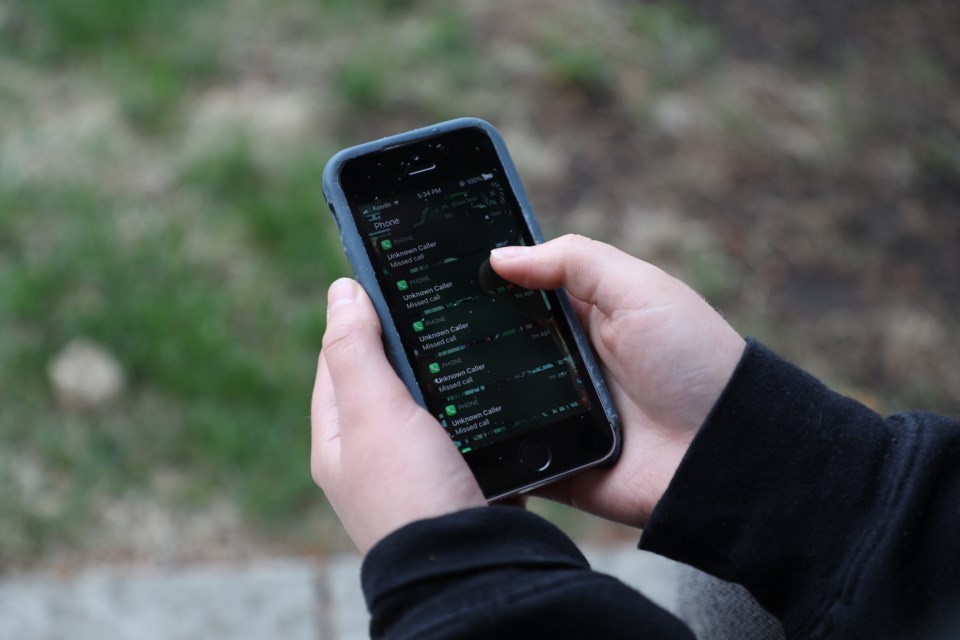There were no visible bruises or cuts on her body, but what she was feeling inside was indescribable.
For years Serena Hodgins, whose name has been changed to protect her identity, was receiving emails and texts from her ex-husband that targeted her looks and her personality. He even reached out to her friends and family.
“Most of the abuse was done from behind the screen … I guess you could say, I got used to it, and I thought it would go away. But it only got worse,” said Hodgins.
It didn’t matter how many times Hodgins blocked him. Her ex would change his phone number and his email address to get to her. He even turned his attacks to social media.
“I wasn't giving a reaction. I wasn't responding to any of these negativities. It just kept getting worse and worse and that's when he went to my work Facebook page,” she said.
It wasn’t until he targeted her place of work that Hodgins felt she could go to the police.
“I have to admit this time around, it didn't matter because it was beyond me it was now my workplace … I was in a different role. I was protecting others, that wasn't just on me,” she said.
It took a lot of work, but Hodgins was able to get a restraining order against her ex.
“I went into the courtroom with a lot of anxiety but left protected by a few pieces of paper,” said Hodgins.
Although Hodgins is grateful she was able to get a restraining order, she still has concerns. Her ex is able to continue with his life going on as normal, whereas she will have to go back to court every year to renew the order.
“There should be accountability, there should be with the accountability for someone to have to go and get help, whether it's psychological health, or spend time with a doctor, counselling, you name it,” said Hodgins.
Hodgins said she didn’t want to put the issue to rest. She reached out to St. Albert-Edmonton MP Michael Cooper because of his work with Wynn’s Law. She felt he was someone who would be willing to take on an issue that wasn’t easy.
On May 10, Cooper held a roundtable discussion on domestic violence in the community where Hodgins spoke about the abuse she has gone through. The goal of the roundtable was to expand the discussion on what is working to help fight the issue of domestic violence, where there are gaps, and ways to fix those gaps.
The roundtable followed the release of a unanimous report by the Justice Committee on April 27. The report recommended legislative changes to make coercive and controlling behaviour a criminal offence in the Criminal Code.
The report stated the recognition that physical violence is almost always preceded by coercive and controlling behaviour in intimate partner relationships, and that current laws do not reflect these harms.
Areni Kelleppan, executive director for Stop Abuse in Families was also present at the roundtable hosted by Cooper. She said abuse never starts with physical violence.
“Slowly but surely, that coercive control is the first indicator … so isolating you from friends, isolating you from your job, isolating you from your support systems, controlling what you do, controlling where you go, all of those things are where that abuse cycle starts. Now, it may end in physical violence and death. But it starts, it always starts, with the coercive control,” Kelleppan explained.
Kelleppan said the abusive partner in Hodgins' case maintained his hold over her throughout the relationship, but also after Hodgins left.
“He continued to use coercive control to abuse her. And that often happens. People always say leave them, just leave. But through the court system, through additional mechanisms, abusers very rarely want to let go of the control they have.
“They will continue to use every mechanism that they can. They figured out all your buttons, they have figured out every way to control you within the relationship. You leaving doesn't change intrinsically who you are. They know how to control you, and they will continue to use those techniques to control you and abuse you,” said Kelleppan.
Hodgins is a perfect example, said Kelleppan, of someone who, after identifying that the relationship is abusive and leaves, continues to be abused.
“He was able to use technology, he was able to use what he knew of her, her workplace, her friends, her family. He was intimately involved with this person, so he knew everything about her. Can you imagine trying to extricate yourself from someone who knows every personal detail about you? … Once an abuser has a person under their control, they're going to keep wielding that control,” said Kelleppan.
Kelleppan thinks it’s fantastic the Justice Committee is recognizing that family violence starts with coercive and controlling behaviour. She said that for the longest time the legal system was hampered by the idea that physical violence or the evidence of it was the mechanism to trigger supports and things around safety
“The emotional violence and the psychological violence that people experience through that coercive controlling behaviour is manifested in the mental well-being or not well-being of so many people. And if we are acknowledging that mental health is just as important, if not more important than our physical health, then violence against us mentally, that causes us such trauma that has similar effects, that physical abuse does.
“This is a step in the right direction to understand that coercive and controlling behaviour underlies all family violence and that it’s not just physical violence that demonstrates it.”




